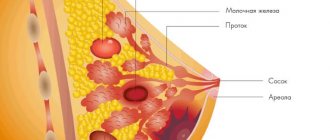FAQ
How does ureaplasmosis manifest in pregnant women? What is the treatment? Why is this dangerous? Is it possible to treat ureaplasmosis with folk remedies? Some folk recipes for ureaplasmosis What is ureaplasmosis 10 to 4 degrees? How does ureaplasmosis manifest in newborns? How dangerous is this disease? Can ureaplasmosis occur in the mouth? How does it manifest? What to do if ureaplasmosis is detected during pregnancy planning? Can ureaplasmosis occur in a virgin? Where does it come from? Are mycoplasmosis and ureaplasmosis the same thing? After treatment for ureaplasmosis, itching appeared. What to do? What is ureaplasma parvum and urealiticum? Ureaplasma is a microscopic microorganism capable of intracellular parasitism. Currently, there is a steady upward trend in the number of detected cases of infection. Along with this, predominantly simultaneous infection with several types of sexually transmitted infections is observed: gonorrhea, mycoplasma, ureaplasma, chlamydia. Therefore, the symptoms of the disease may vary. And the combination of several infections requires a complex treatment regimen and control of cure for all identified diseases.
How does infection with ureaplasma occur?
Sexual route of infection
Undoubtedly, the most common method of infection is sexual intercourse. However, in fairness, it is worth noting that about 20-40% of those infected do not feel any symptoms of the disease itself - therefore they are only carriers. Under unfavorable conditions for the body, these symptoms may appear, but as long as the immune system keeps the ureaplasma population under control, the patient may not even be aware of the disease. It should be noted that infection with ureaplasmosis is possible through such types of contact as: kissing, oral or genital sexual contact without barrier protection.
Vertical route of infection (from mother to fetus at birth)
This type of transmission of infection is possible precisely because the favorite habitat of ureaplasma is the mucous membrane of the genital tract - through which a child passes during natural childbirth.
Contact and household transmission route
At present, there is no convincing evidence of the possibility of infection by this method. Therefore, you should not seriously consider the possibility of infection in the pool, through a shared toilet lid or household items.
Methods of infection
There are several ways to acquire Ureaplasma infection:
- during sexual intercourse (more than half of cases)
- in utero, during gestation and through the birth canal when pregnancy is resolved
- by household means in the human environment in more than 30% of cases.
Conditional factors also contribute to the transmission of infection:
- onset of sexual activity at an early age
- lack of protection during sexual intercourse
- promiscuity
- a large number of stressful situations
- irradiation procedures
- poor living conditions
- presence of chronic diseases
Another important point that contributes to infection is weak immunity. A decrease in immunity can occur due to constant colds, poor nutrition, poor lifestyle, nervous exhaustion, etc.
Detailed and clear information about ureaplasma and the need for its treatment
Symptoms of ureaplasmosis Symptoms of ureaplasmosis in men
Urethritis (inflammation of the urethra)
The first thing to notice is the symptoms of inflammation of the urethra (urethritis).
In this case, discomfort and burning sensation in the urethra occurs, which intensifies with urination until severe pain occurs. Also during sexual intercourse there are painful sensations that intensify with ejaculation. Discharge from the urethra
is usually not profuse, more mucous in nature, and liquid in consistency.
Inflammation of the epididymis
In severe cases, lesions of the testicles may occur - in this case, the patient feels heaviness and bursting painful sensations in the testicles, which intensify when palpated.
Symptoms of prostatitis
Occur, as a rule, some time after the onset of symptoms of urethritis.
This indicates the progression of the infection. With prostatitis, the symptoms include soreness in the perineal area, pain can intensify when sitting, when palpating the perineal area. Prostatitis can also manifest itself as decreased libido and shortened erection duration. Sexual contact can be painful. Male infertility
Long-term prostatitis and orchitis (inflammation of the testicles) can lead to persistent male infertility.
Causes of the disease
The main microorganisms that penetrate the human genitourinary system and generate the focus of the disease are Ureaplasma Urealiticum and Ureaplasma parvum.
Ureaplasma as a disease, what is it?
These are single-celled opportunistic bacteria. Since they are initially elements of a woman’s microflora. Because of this, an infection can be present in the body for a very long time, but not be the cause of the disease. But when the necessary conditions are created, in this case negative for human health, bacteria take an active form of development and begin to show themselves with signs of illness.
What can trigger the disease:
- cystitis, inflammation of the bladder
- infection with other infections acquired through sexual contact
- sexual contact with a partner who has inflammatory processes
- poor hygiene in the genital area
- inflammatory processes of the pelvic organs
Symptoms of ureaplasmosis in women
Urethritis (inflammation of the urethra)
Pain and burning in the urethra.
The pain is also characterized by a sharp increase in urination. The mucous membrane of the external urethral os is inflamed. Discharge from the vagina and urethra
The discharge is not abundant, as a rule, it is mucous in nature.
Pain during genital sexual intercourse
It occurs as a result of additional mechanical irritation of the inflamed mucosa.
Bloody discharge from the vagina after sexual genital contact.
The cause of this symptom may be inflammation of the vaginal mucosa, its increased sensitivity to mechanical influences.
Pain in the lower abdomen
This symptom may indicate the progression of infection through the genital tract, affecting the lining of the uterus and fallopian tubes.
Which can cause complications such as endometritis, adnexitis. Female infertility
With inflammation of the genital tract and damage to the endometrium of the uterus, normal conception and intrauterine development of a child is impossible. Therefore, female infertility or frequent miscarriages may occur in the early stages of pregnancy.
Complications of ureaplasmosis
Unfortunately, recently there has been an increasing increase in the number of complications caused by the long course of ureaplasmosis. As mentioned above, ureaplasmosis can be the cause of male or female infertility, along with damage to the genitourinary system, the development of autoimmune diseases, so-called rheumatic diseases, is possible.
Male infertility
- can develop both as a result of damage to the prostate by ureaplasma, and with damage to the testicles.
When the prostate becomes inflamed, the secretion of the portion of sperm it secretes decreases, while the qualitative composition of the sperm changes, which makes the process of sperm movement through the woman’s genital tract impossible. Impotence
– with the development of prostatitis, painful erection or its absence can be the cause of persistent organic pathology, which requires adequate treatment under the supervision of a specialist.
Female infertility
- damage to the uterine mucosa leads to the fact that the process of implantation of a fertilized egg becomes impossible.
Moreover, even if conception has taken place, the inflammatory process in the endometrium can cause early miscarriage. Premature birth
- in some cases, if pregnancy occurs against the background of ureaplasmosis, one should be wary of an earlier development of labor.
There is also a high probability of having a low birth weight baby. Rheumatic diseases
- a long-term chronic form of ureaplasmosis can be one of the triggering factors for the development of an autoimmune process. Therefore, ureaplasmosis may be a risk factor in the development of rheumatic diseases.
Disease prevention
By taking the right measures, you can prevent infection with an infectious disease such as Ureaplasma.
Below are the main methods of prevention:
- Visit a gynecologist or urologist once every six months
- Once a year, if you have an active sexual life, take tests to diagnose urogenital infections
- Avoid hypothermia of the pelvic organs
- Drink a seasonal vitamin complex
- Carefully monitor genital hygiene
- Having sex using a condom
- After unprotected sexual intercourse, treat the surface of the genital organs with a solution of Chlorhexidine or Miramistin
- Change your underwear and bed linen regularly
- Do not use other people's personal hygiene items
- After visiting the sauna, swimming pool and public bodies of water, disinfect the genitals with special means
- do not have sexual intercourse with unfamiliar partners
- Do not use other people's towels, bed linen or clothing
- Timely treatment of inflammatory processes of the genitourinary system
- Take an interest in the health of your sexual partner
- Eat a balanced diet, avoiding fatty and spicy foods
Before deciding to conceive a child, visit a gynecologist and recommend that your partner also undergo examination by a urologist.
You should always remember that a disease diagnosed in time will not take on complex forms and will have minimal impact on the body. You need to take care of your own health, following all the recommendations and prescriptions of doctors.
Lead a healthy lifestyle without worsening your living conditions on your own. Monitor the quality of your personal life without endangering your health through casual sex.
Health is the most valuable thing you have.
Diagnosis of ureaplasmosis
It is impossible to make a diagnosis of ureaplasmosis based on external symptoms - only laboratory data are a reliable basis for making a diagnosis. However, a gynecological examination and laboratory tests must be present.
How to prepare for a visit to a gynecologist if you suspect sexually transmitted infections?
You should know for sure that to diagnose such diseases, a gynecological examination (examination in mirrors) will be carried out without fail. This study is carried out in order to visually assess the presence or absence of discharge, their properties, the condition of the mucous membrane of the vagina and cervix, the condition of the external os of the cervical canal, and the condition of the mucous membranes of the external genitalia.
The presence of mucopurulent discharge, a strong ammonia odor and inflammation of the mucous membranes of the vagina and urethra will indicate ureaplasmosis and other sexually transmitted diseases.
A visit to a doctor should be preceded by preparation:
- 2 days before your appointment with the doctor, you must abstain from any sexual contact.
- Within 2 days before the examination, you must stop using any vaginal suppositories, gels and other drugs administered vaginally.
- It is necessary to stop douching and using vaginal tampons.
- The night before visiting the doctor, you should wash yourself with warm water, preferably without using soap.
- On the day of treatment, washing is contraindicated.
Lab tests
Laboratory tests to detect ureaplasmosis are performed with various types of biomaterial - this is the patient’s blood and a smear from the genital mucosa.
Bacteriological analysis, PCR study, culture
– these types of diagnostics use material obtained as a result of taking a smear. Serological studies that detect antibodies against a specific infectious agent are carried out using the patient’s blood.
Currently, only PCR diagnostics are considered effective in diagnosing ureaplasmosis. All other diagnostic methods are either uninformative or produced for scientific purposes. Let's consider the advantages and disadvantages of each of the methods used.
Bacteriological examination of a smear for ureaplasma
- is not produced, since mycoplasmas are simply not visible when examining a smear using a microscope - they are so small. However, this examination is carried out because in 80% of cases of diagnosis of sexually transmitted diseases, ureaplasmosis is combined with several other types of infections, and this method can also identify concomitant bacterial or fungal vaginosis, which must be cured before prescribing the main treatment against ureaplasma. Therefore, you should not refuse this examination - it is necessary to prescribe complex treatment.
Culture from a smear or genital tract discharge
– not effective against ureaplasma. However, as mentioned above, this method is of some value in identifying concomitant sexually transmitted infections.
PCR diagnostics
— allows you to reproduce and identify the genetic material of the pathogen. This method has maximum reliability and sensitivity. Therefore it is the diagnostic of choice.
Serological studies (ELISA, PIF)
– these studies make it possible to identify antibodies to the infectious agent. They are difficult to interpret due to the fact that the body does not develop stable immunity to ureoplasma infection, and the number of carriers of this infection is much greater than those who have developed symptoms of the infectious process.
Conducted clinical and laboratory studies make it possible to identify ureaplasmosis and concomitant infectious diseases of the genitourinary system with a high degree of probability. It is high-quality diagnosis and identification of all infectious lesions that allows us to prescribe adequate treatment and hope for a complete recovery. You should pay attention to the fact that your sexual partner must also be examined in full - after all, the effectiveness of treatment of only one of the infected sexual partners in this case will be minimal.
Lifestyle and nutrition
To increase the effectiveness of ureaplasmosis therapy, a woman must strictly follow the doctor’s recommendations regarding lifestyle and diet. Basic Rules:
- Abstinence from sexual intercourse.
- Refusal of fatty, smoked, fried foods, sweet pastries.
- Avoiding alcohol (antibiotics cannot be combined with alcohol).
To avoid re-infection and not to be treated again in the future, you need to reconsider sexual behavior (if the cause of infection was a frequent change of partners). Sexual acts must be protected. This is the main rule and preventive measure.
Ureaplasmosis in women can cause serious inflammatory diseases of the genitourinary system and infertility. Treatment of ureaplasma should be comprehensive. It is important to follow all doctor's recommendations.
Treatment of ureaplasmosis
It’s worth mentioning one important point right away - treatment of ureaplasmosis should be carried out according to the following rules:
- Treatment is prescribed to both partners at the same time, and the appointment of treatment should be preceded by a full diagnosis.
- If concomitant infectious diseases are detected, treatment is prescribed according to an individual scheme depending on the identified spectrum of infections.
- During the treatment period, any sexual contact is prohibited, including using barrier methods of protection.
- The treatment carried out requires a follow-up examination to diagnose cure within the time frame established by the doctor.
Immune stimulation
In order to effectively fight ureaplasma infection, antibiotics alone are not enough. After all, antibacterial agents only help the immune system cope with bacteria that harm the body. Therefore, whether a complete cure will occur depends largely on the state of the immune system. To stimulate the immune system, it is necessary to adhere to a rational regime of work and rest, the diet must be balanced and contain easily digestible protein, vegetable fats and vitamins A, B, C and E. Also, to stimulate the immune system, medications are often used - such as Immunal or St. John's wort tincture .
Adequate treatment of infectious and inflammatory diseases is possible only under the supervision of a specialist attending physician!
How to determine whether a cure has occurred?
After completing the course of drug treatment, a month later, a diagnosis of cure can be made. For this, the same laboratory research methods are used as for identifying the disease - PCR diagnostics and bacteriological examination of a smear from the vaginal mucosa. A negative test result indicates a complete cure. If there is a positive result, the attending physician may suggest repeating the course of treatment using a different antibiotic.
Prevention of ureaplasmosis
Currently, the question of whether it is worth using drug treatment among people who are carriers of ureaplasma, but they do not have any symptoms of ureaplasmosis, is being actively debated. This circumstance indicates that ureaplasma can be classified as opportunistic infections that appear only under certain unfavorable conditions.
What needs to be done to avoid becoming infected with ureaplasmosis, and if infection occurs, what should be done to avoid complications?
- Reducing or eliminating casual sexual contact.
- In case of casual sexual contact (regardless of the type of contact), it is necessary to use individual barrier protective equipment.
- Treatment should be comprehensive and result in a negative control test result.
- Maintaining immunity at a high level will allow the body to cope with this infection on its own.
How does ureaplasmosis manifest in pregnant women? What is the treatment? Why is this dangerous?
Previously, doctors often recommended artificial termination of pregnancy to pregnant women who were diagnosed with ureaplasmosis. Nowadays the tactics have changed. Most often, a woman can carry her pregnancy to term and give birth to a child. However, the disease negatively affects both pregnancy and the condition of the fetus. Therefore, it is better to get tested and treated in advance.
Features of ureaplasmosis during pregnancy:
- A pregnant woman has a reduced immune system. Even if ureaplasma is present in the body in small quantities, it can cause an infection.
- Antibiotics should not be taken in early pregnancy. Antibacterial drugs have side effects and can negatively affect the fetus.
- Against the background of reduced immunity, ureaplasmosis opens the gates to sexually transmitted infections. If a woman becomes infected with an STD, this will have an even more negative impact on the course of pregnancy.
Possible complications of ureaplasmosis during pregnancy:
- Miscarriage. In the early stages, the disease can lead to miscarriage.
- Premature birth. The child is born premature and weakened. This occurs due to the fact that with ureaplasmosis the cervix loosens. It can be sutured, but this can also negatively affect the child’s condition.
- Violation of uteroplacental blood flow.
- Hypoxia (oxygen starvation) of the fetus.
- Intrauterine developmental delay.
Features of treatment of ureaplasmosis during pregnancy:
If pregnancy proceeds without complications against the background of infection, and there is no threat of miscarriage, then treatment is prescribed from the 22nd week. At earlier stages, there is a high risk of negative effects of antibiotics on fetal development. Antibacterial drugs from the macrolide group (erythromycin) are usually used in combination with immunotherapy (thymalin, T-activin) and probiotics (lactusan, colibacterin, bifidumbacterin). Treatment is selected individually. Your doctor may also prescribe other medications.
If the infection develops early in pregnancy, it can lead to serious damage to the fetus, missed abortion, and miscarriage.
At later stages, fetoplacental insufficiency and fetal hypoxia develop. The child is born prematurely, underweight, and weakened. If the fetus experiences severe oxygen starvation, then the child may subsequently develop mental disorders.
There is evidence that ureaplasma can disrupt the development of the nervous system. Because of this, in the past, doctors often recommended induced termination of pregnancy for infected women. Today the tactics have changed.
What is ureaplasma urealiticum
Ureaplasma urealyticum parvum is a microbe, a type of mycoplasma that stimulates inflammation in the organs of the genitourinary system. As the disease progresses, bacteria can penetrate the joint capsules, affecting the tissues of the joints, causing the development of an inflammatory process in them. The pathogen got its name due to its ability to break down urea, which is the main difference between ureaplasma and mycoplasma, which belongs to the same genus of bacteria. The ability to realize is a trigger for the development of urolithiasis and urate nephrolithiasis.
About 40% of people are carriers of ureaplasma urealiticum, but often do not even suspect it until they get tested. The main reason for the development of the disease is sexual contact with an infected partner. A pathogenic microorganism can live on the mucous membranes of the genitourinary tract for a long time, without clinically manifesting itself and without causing associated pathologies. The reasons for the activation of ureaplasma urealyticum in women and men include:
- pregnancy;
- promiscuity;
- weakened immunity, frequent viral infections;
- previous operations;
- exacerbation of chronic diseases.
Ureaplasma urealiticum can pass in utero from a sick mother to the fetus (girls are more susceptible to infections), affecting the respiratory tract and mucous membranes. An opportunistic microbe can cause asymptomatic carriage and manifest itself pathogenically only under certain conditions. Factors that provoke inflammation of the urogenital tract are:
- presence of sexually transmitted infections;
- diseases of the genital organs;
- vaginal dysbiosis in women;
- prostatitis in men;
- decreased immunity, immunodeficiency.
How is it transmitted?
Ureaplasma urealiticum is a membrane parasite that is tropic to the epithelium of the urogenital tract. The bacterium takes part in the development of inflammatory changes in the vulva, vagina, kidney, and uterus. Under the influence of ureaplasma, miscarriage, premature birth, development of urolithiasis or postpartum complications can occur. The pathogenic microorganism is transmitted as follows:
- Infection occurs through unprotected sexual intercourse with an infected person. The bacterium thrives on the surface of sperm and on the vaginal epithelium.
- Microbes penetrate the uterus and genitourinary system in an ascending manner. Vertical transmission of infection occurs when ureaplasma penetrates from the vagina and uterine cervix into the kidneys and ureter.
- The transmission of infection to the fetus from the mother occurs through the transplacental route. Intrauterine infection occurs through the skin, gastrointestinal tract, eyes, and organs of the urinary system.
- During labor, mechanical infection of the child occurs.
- Patients may become infected during organ transplantation.
- Rarely, infection with ureaplasma occurs through oral or anal contact.
- Contact-household transmission of infection accounts for less than 1% of cases.
- How to restore eyelashes after extensions
- Multicooker-pressure cooker - rating of the best models
- Why do girls and women menstruate twice a month? Reasons for repeated discharge
What causes
According to medical standards, in women, ureaplasma urealyticum is considered an opportunistic microbe that exhibits pathogenic properties only under the influence of negative factors. In combination with other pathogenic microorganisms, ureaplasma can lead to the development of a number of pathologies that require complex treatment. As a rule, this bacterium is highly resistant to modern antibiotics and is difficult to treat. In women, the microorganism can cause:
- cervicitis;
- endometritis;
- vaginitis;
- adnexitis;
- vaginosis;
- pelvic diseases;
- cervical erosion;
- cervical insufficiency;
- infertility.
Often ureaplasma infection occurs secretly in women. The clinical picture of the disease is determined by the location of the pathological process. In this case, the symptoms are mild and go away quickly. The infection is activated by nervous tension, weakened immunity, and physical fatigue. An infected woman does not feel any effects of the bacteria on her body. Complications in the fairer sex are extremely rare. In patients with weakened immune systems, the pathologies described above appear that require antibacterial therapy.
The first symptoms of ureaplasma urealyticum in men appear about a month after infection. In this case, the bacterium provokes the development of:
- urethritis;
- epididymitis;
- orchitis;
- prostatitis;
- cystitis;
- narrowing of the urethra;
- meningitis;
- pneumonia;
- infectious arthritis;
- erectile dysfunction.











